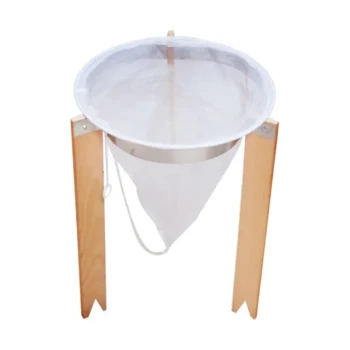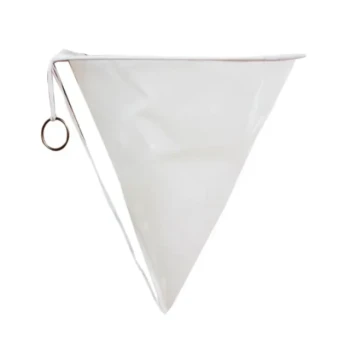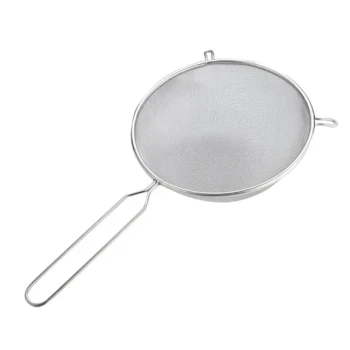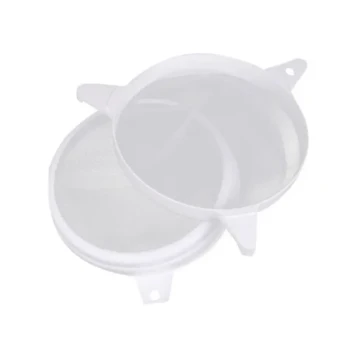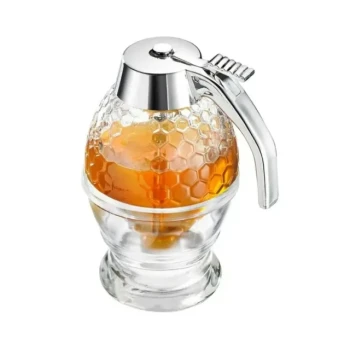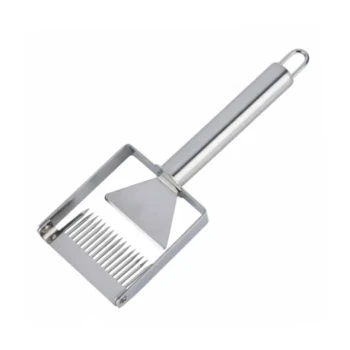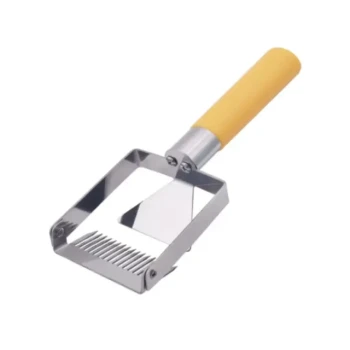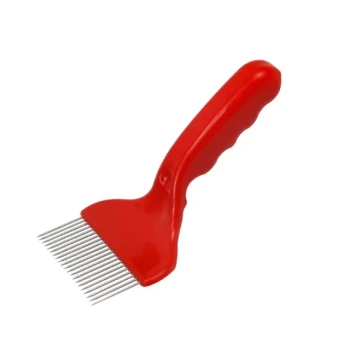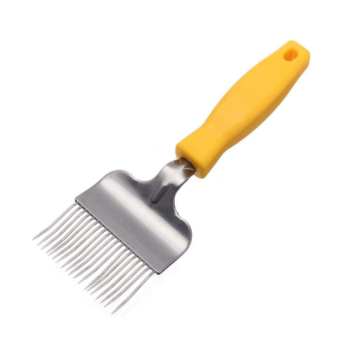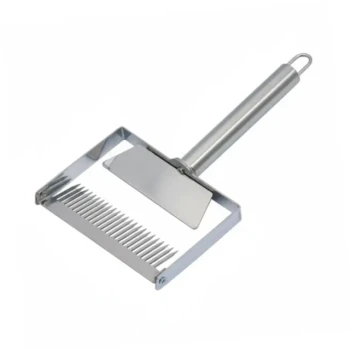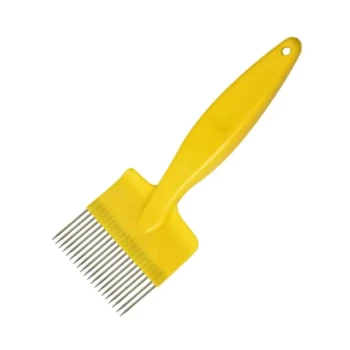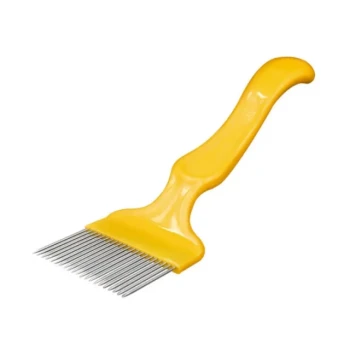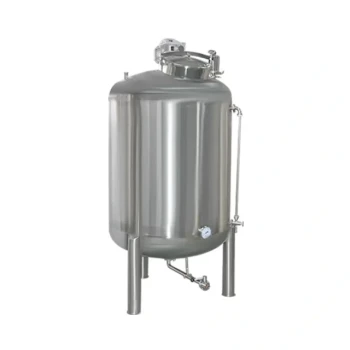To filter raw honey effectively, you can use simple materials like a clean paint strainer, a nylon bag, or a food-grade stainless steel screen. The primary goal of this process is to separate the liquid honey from solids such as beeswax, propolis, and other hive debris left over after extraction.
The core of successful honey filtering isn't just the screen you use, but your ability to manage honey's thickness. Applying gentle, controlled warmth makes the honey flow freely, allowing gravity to do the work of separating impurities for a clean, final product.
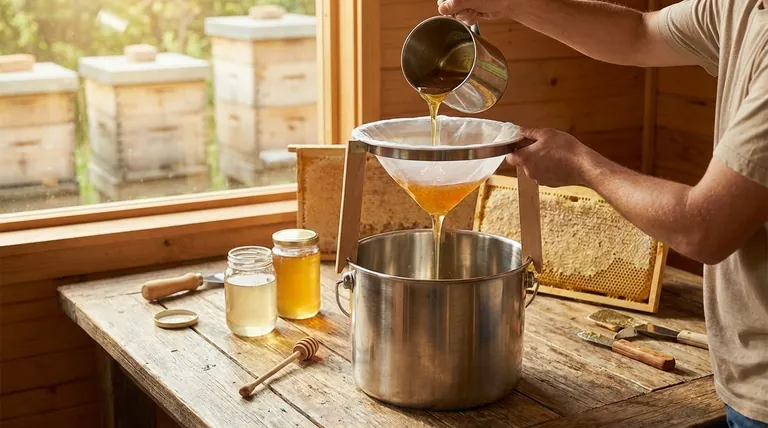
Why Filtering Honey is a Necessary Step
Before bottling, raw honey contains a variety of solids from the hive. Straining or filtering is the crucial step that transforms this raw harvest into a finished product ready for the pantry.
Removing Physical Debris
The most obvious reason to filter is to remove visible impurities. This includes bits of wax cappings, propolis (a resinous bee glue), wood splinters from the frames, and even unfortunate insect parts.
Improving Clarity and Appeal
A clean, clear jar of honey is visually appealing and often what customers expect. Filtering removes the tiny suspended particles that can make honey look cloudy, resulting in a brilliant, jewel-like final product.
Slowing Down Crystallization
Fine particles of wax and pollen can act as "seeds" or nucleation points that encourage honey to crystallize faster. By filtering these out, you can often extend the time your honey remains in a liquid state.
Common Filtering Methods and Materials
The method you choose will depend on your batch size and desired level of clarity. For most small-scale operations, gravity-based systems are simple and highly effective.
The Double-Bucket System
This is a popular DIY method. It involves nesting one bucket with a hole in its bottom inside another solid bucket. The filter material is placed over the bottom bucket, and the crushed comb and honey are poured into the top bucket, allowing clean honey to drain through.
Choosing Your Filter Material
You have several options, ranging from coarse to fine:
- Nylon Bags: Often sold as "jelly bags" or paint strainers, these are inexpensive and effective for removing larger debris.
- Cloth: A simple cheesecloth or other porous cloth can be used, but it can clog quickly.
- Stainless Steel Screens: These are the most durable and reusable option. They come in various mesh sizes (measured in microns) that allow for a multi-stage process, starting with a coarse screen and moving to a finer one.
The Critical Role of Gentle Heat
Honey is viscous, meaning it's thick and flows slowly. Heat is your most important tool to speed up the filtering process.
Gently warming your honey to around 95-100°F (35-38°C) will dramatically lower its viscosity, allowing it to pass through a filter with ease. This can be done by placing your honey bucket in a warm water bath or in a heated "warming cabinet."
Understanding the Trade-offs
Choosing a filtering method involves balancing clarity against the desire to keep the honey in its most natural state.
Straining vs. Fine Filtering
Straining typically refers to using a coarse filter (like a 400-600 micron screen) to remove only the large, visible debris. Filtering, by contrast, often implies using a finer screen (200 microns or less) to produce exceptionally clear honey.
The Risk of Over-Filtering
Extremely fine filters can remove beneficial pollen grains from the honey. Since many consumers value honey for its local pollen content, aggressive filtering can strip away one of its desirable characteristics.
The Danger of Too Much Heat
While warmth is essential, excessive heat is honey's enemy. Heating honey above 105°F (40°C) can begin to destroy its delicate enzymes and aromas. Overheating will darken the honey and permanently alter its flavor. Always use low, controlled heat.
Making the Right Choice for Your Goal
Select your filtering approach based on the intended use for your honey.
- If your primary focus is simple, clean honey for personal use: A double-bucket system with a standard nylon paint strainer or a single 400-micron stainless steel screen is perfectly effective.
- If your primary focus is producing crystal-clear honey for sale: Use a two-stage process, starting with a coarse filter to remove large wax pieces and finishing with a 200-micron filter for maximum clarity.
- If your primary focus is retaining all-natural elements, including pollen: Use only a coarse strainer to remove the largest debris and accept a slightly less-than-perfect appearance as a sign of minimal processing.
Ultimately, the right filtering method respects the natural quality of the honey while meeting your standards for purity.
Summary Table:
| Filter Material | Best For | Key Consideration |
|---|---|---|
| Nylon Bags / Paint Strainers | General use, removing large debris | Inexpensive, can clog with fine particles |
| Stainless Steel Screens | Durability, multi-stage filtering | Reusable, available in various micron sizes |
| Cloth (e.g., Cheesecloth) | Quick, coarse straining | Prone to clogging; less durable |
Ready to produce crystal-clear honey efficiently? HONESTBEE supplies commercial apiaries and beekeeping equipment distributors with high-quality, wholesale-focused filtering solutions. From durable stainless steel screens to complete double-bucket systems, we provide the reliable equipment you need to scale your operation. Contact our team today to discuss your honey processing needs and get a quote!
Visual Guide
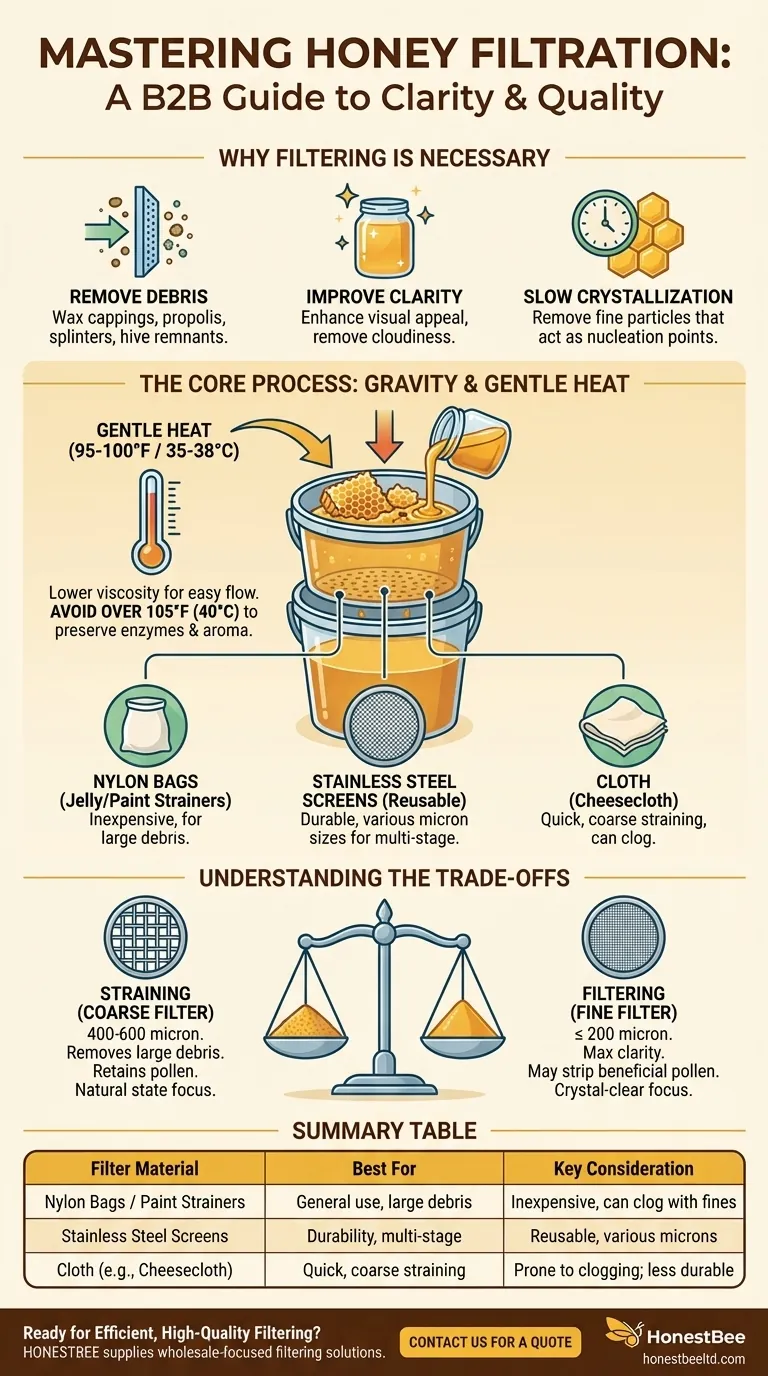
Related Products
- Professional Honey Filter with Tripod Support Stand
- Professional Cone-Shaped Honey Filter with Reinforced Steel Ring
- Professional Stainless Steel Honey Filter with Support Handle
- Two-Stage Plastic Honey Filter for Buckets
- Nylon Honey Strainer Square Filter Cloth for Honey Filters
People Also Ask
- What is better, a 100 or 200 micron filter? Find the Right Fit for Your Water System
- Why is filtering honey considered an essential step in honey processing? Ensure Quality and Commercial Viability
- What is the role of filtration in honey processing? Ensure Purity, Clarity, and Shelf Life
- Why is it important to inspect and replace filters in honey filtering equipment? Protect Your Honey Quality & Equipment
- What are the benefits of drying honey filtering equipment after use? Protect Your Honey Quality & Equipment Investment
